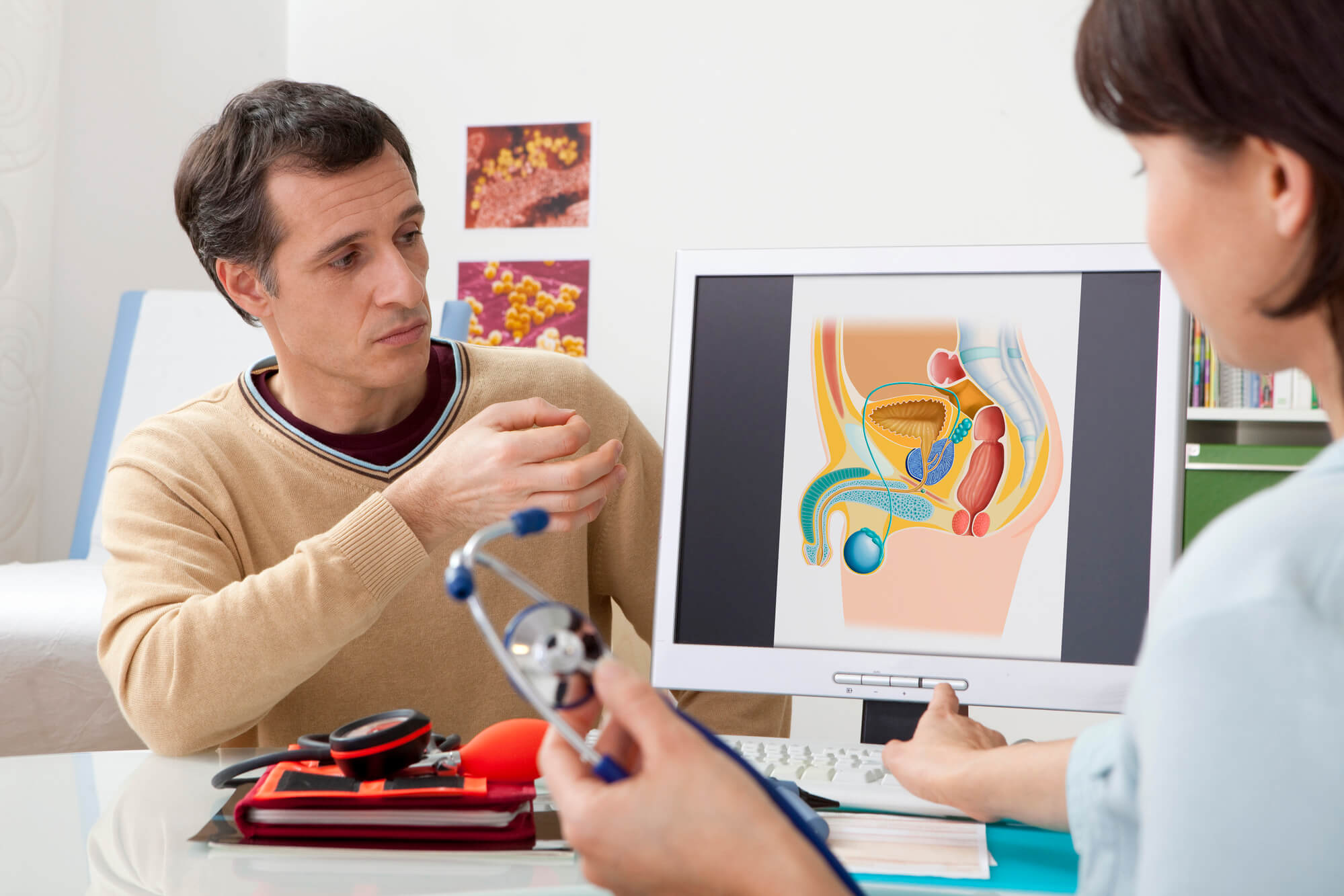Need for Prostate Surgery
-
Benign( non-cancerous) prostatic hyperplasia (BPH) is a benign medical
condition, also called an enlarged prostate, that affects ageing men. When men cross
their 40s, the prostate begins to grow, by the age of 50, this becomes the most common
prostate problem, and by the age of 70 or 80 around 90% of men have an enlarged
prostate. In the case of BPH, the prostate grows and blocks or squeezes the urethra and
in some cases, if neglected, becomes too large, thereby causing problems with urination.
Initial symptoms of BPH include :
- Slow urinal flow
- The feeling of incomplete urination
- Struggle to start with urination
- Frequent need to urinate
If treated casually, BPH can lead to symptoms like blood in urine, infections in the
bladder, Kidney stones, or kidney damage. However, Infertility or prostate cancer aren’t
BPH symptoms or causes as BPH does not lead to erectile issues.
After suggesting a few lifestyle changes and medications if there’s no improvement in
the BPH condition, only then the doctors opt for surgery.
-
Prostate Cancer is
a very common form of cancer in men. It usually does not have
any early warning symptoms and is detected only while screening tests. Some signs that
relate to the advance stage symptoms include:
- Loss of appetite
- Weight loss
- Fatigue
- Hematuria
- Erectyl dysfunction
- Inability to unload the bladder completely
Late-stage cancer symptoms include lymphedema, lower back pain, localised swellings due
to excess lymph-fluid accumulation. The rate of recovery from prostate cancer is much
higher than the other forms because it progresses slowly and gives enough time for
treatment and cure.Late-stage cancer symptoms include lymphedema, lower back pain,
localised swellings due to excess lymph-fluid accumulation. The rate of recovery from
prostate cancer is much higher than the other forms because it progresses slowly and
gives enough time for treatment and cure.
Types of prostate surgery
The objective of prostate surgery depends on the patient’s condition. In case of a prostate
cancer surgery, the goal is to get the cancerous tissue removed, while in case of BPH surgery,
the goal is to restore normal urinary flow by removing prostate tissue.
-
Open Plasectomy is also the traditional open surgery. The surgeon makes an inversion
through the skin and removes the prostate gland and the needed nearby tissues.
It has two primary approaches:
-
Radical perineal approach where the surgeon cuts in the space between scrotum and
rectum. This takes less time than radical t=retropubic approach but poses a higher
risk of erectile dysfunction. This approach is usually taken up when there are
medical conditions that complicate retropubic surgery, and so the surgeon cannot
remove the lymph nodes.
-
Radical retropubic approach is when the surgeon cuts through the bellybutton to
the pubic bone. Unless the cancer is found spreading, only the prostate is removed.
If the surgeon suspects cancer, he will remove some lymph nodes for testing and, if
a spread out cancer is detected, the surgeon might not continue with the surgery.
In either type of Plasectomy, the patient is placed under general, epidural or spinal
anaesthesia.
-
Laparoscopic Surgery is a less invasive approach of prostate surgery with two main
methods:
-
Laparoscopic radical prostatectomy is the approach wherein the surgeon makes
multiple small cuts to insert tiny surgical equipments. The surgeon uses a small
tube with a camera to look into the area.
-
Robotic-assisted laparoscopic radical prostatectomy includes a robotic interface.
The surgeon operates a robotic arm while sitting in the operating room and views it
through a computer monitor. The robotic arm gives more manoeuvrability than other
procedures.
Recovery from the Surgery
Before the patient gains any consciousness or wakes up, the surgeon places a catheter into his
penis for his bladder to drain completely. The catheter usually stays for the first two weeks
from surgery. The patient might have to stay for a few weeks but usually is allowed to go home
after 24 hours. The patient is given clear and elaborated instructions on how to manage the
catheter and care for the surgical area to avoid infection or other complications. A healthcare
worker removes the catheter when the situations are right, and the patient is capable of
urinating by themselves.
Post-surgery, the surgical area is expected to stay sore for some time and a few symptoms like
blood with urine, irritation, lack of urine control, infections in the urinary tract, etc. can
be expected too. The recovery time overall depends on overall health, type and length of surgery
and how well the doctor’s instructions are followed.
Precautions for Prostate ailments
Even though studies suggest that 9 out of 10 men would suffer from BPH by the age of 80, people
still wonder if there are ways of preventing it. The answer to it from most doctors is NO. A few
lifestyle changes can do some good for the prostate, like good exercise and heart-healthy diet
which keeps weight under control. Exercise can also help in emptying the bladder. Some health
conditions that make patients susceptible to BPH and can be controlled/ managed are:
-
Obesity
-
Lack of physical activity
-
Type 2 diabetes
-
Heart diseases
